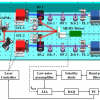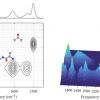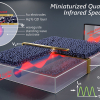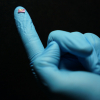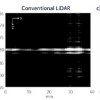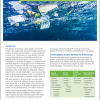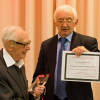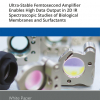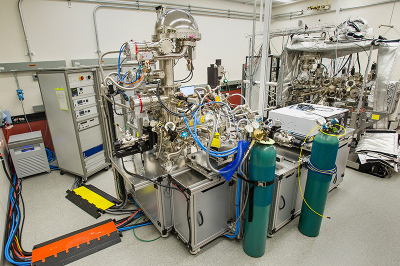
Researchers at Binghamton University led research partnering with the Center for Functional Nanomaterials (CFN)—a US Department of Energy (DOE) Office of Science User Facility at Brookhaven National Laboratory—to get a better look at how peroxides on the surface of copper oxide promote the oxidation of hydrogen but inhibit the oxidation of carbon monoxide, allowing them to steer oxidation reactions. They were able to observe these quick changes with two complimentary spectroscopy methods that have not been used in this way.
“Copper is one of the most studied and relevant surfaces, both in catalysis and in corrosion science,” explained Anibal Boscoboinik, materials scientist at CFN. “So many mechanical parts that are used in industry are made of copper, so trying to understand this element of the corrosion processes is very important.”
“I’ve always liked looking at copper systems”, said Ashley Head also a materials scientist at CFN. “They have such interesting properties and reactions, some of which are really striking.”
Gaining a better understanding of oxide catalysts gives researchers more control of the chemical reactions they produce, including solutions for clean energy. Copper, for example, can catalytically form and convert methanol into valuable fuels, so being able to control the amount of oxygen and number of electrons on copper is a key step to efficient chemical reactions.
Peroxides are chemical compounds that contain two oxygen atoms linked by shared electrons. The bond in peroxides is fairly weak, allowing other chemicals to alter its structure, which makes them very reactive. In this experiment, scientists were able to alter the redox steps of catalytic oxidation reactions on an oxidised copper surface (CuO) by identifying the makeup of peroxide species formed with different gases: O2, H2 and CO.
Redox is a combination of reduction and oxidation. In this process, the oxidising agent gains an electron and the reducing agent loses an electron. When comparing these different peroxide species and how these steps played out, researchers found that a surface layer of peroxide significantly enhanced CuO reducibility in favour of H2 oxidation. They also found that, on the other hand, it acted as an inhibitor to suppress CuO reduction against CO (carbon monoxide) oxidation. They found that this opposite effect of the peroxide on the two oxidation reactions stems from the modification of the surface sites where the reaction takes place.
By finding these bonding sites and learning how they promote or inhibit oxidation, scientists can use these gases to gain more control of how these reactions play out. In order to tune these reactions though, scientists had to get a clear look at what was happening.
Studying this reaction in situ was important to the team, since peroxides are very reactive and these changes happen fast. Without the right tools or environment, it’s hard to catch such a limited moment on the surface.
Peroxide species on copper surfaces were never observed using in situ infrared (IR) spectroscopy in the past. With this technique, researchers use IR radiation to get a better understanding of a material’s chemical properties by looking at the way the radiation is absorbed or reflected under reaction conditions. In this experiment, scientists were able to differentiate “species” of peroxide, with very slight variations in the oxygen they were carrying, which would have otherwise been very hard to identify on a metal oxide surface.
“I got really excited when I was looking up the infrared spectra of these peroxide species on a surface and seeing that there weren’t many publications. It was exciting that we could see these differences using a technique that’s not widely applied to these kind of species”, recalled Head.
IR spectroscopy on its own wasn’t enough to be sure though, which is why the team also used ambient pressure X-ray Photoelectron Spectroscopy (XPS). XPS uses lower energy x-rays to kick electrons out of the sample. The energy of these electrons gives scientists clues about the chemical properties of atoms in the sample. Having both techniques available through the CFN User Program was key to making this research possible.
“One of the things that we pride ourselves in is the instruments that we have and modified here”, said Boscoboinik. “Our instruments are connected, so users can move the sample in a controlled environment between these two techniques and study them in situ to get complementary information. In most other circumstances, a user would have to take the sample out to go to a different instrument, and that change of environment could alter its surface.”
The results of this study may apply to other types of reactions and other catalysts besides copper. These findings and the processes and techniques that led scientists there could find their ways into related research. Metal oxides are widely used as catalysts themselves or components in catalysts. Tuning peroxide formation on other oxides could be a way to block or enhance surface reactions during other catalytic processes.
“I’m involved in some other projects related to copper and copper oxides, including transforming carbon dioxide to methanol to use as a fuel for clean energy”, said Head. “Looking at these peroxides on the same surface that I use has the potential to make an impact on other projects using copper and other metal oxides.”










